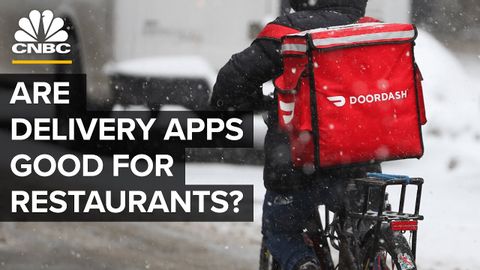UberEats DoorDash适合餐厅吗?(Are DoorDash, UberEats Good For Restaurants?)
joey joey 發佈於 2021 年 04 月 21 日  沒有此條件下的單字
沒有此條件下的單字US /ˈprɑsˌɛs, ˈproˌsɛs/
・
UK /prə'ses/
- v.t.用電腦處理(資料);(依照規定程序)處理;處理;流程;加工;理解
- n. (c./u.)(規定的)程序;過程;進程;方法;法律程序;進程
- adj.(肉等)老的;咬不動的;堅韌的:艱苦的:困難的;強硬的;嚴格的;堅韌的;不屈不撓的;棘手的;費勁的;剛強的
- n.硬漢
- v.t.使變堅強
- v.t./i.忍受
- v.t./i.出現;估計;我認為〜;認為
- n.身影;(計算過的)數量;肖像;圖;形狀;人物;名人;人影;數字
US /pænˈdɛmɪk/
・
UK /pæn'demɪk/
- adj.(疾病)大規模流行的,廣泛蔓延的
- n.大流行病

